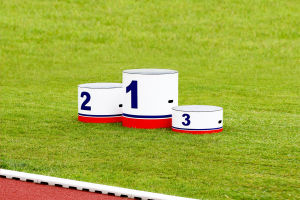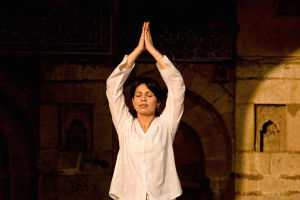
Welcome, Lykkers! We can all agree that celebrating excellence on the global stage is an amazing moment, but how it all started?
Throughout the history of the Olympic Games, few images capture triumph as powerfully as the moment athletes step onto the podium.
This iconic structure, composed of three steps, has witnessed thousands of champions express their emotions, be it joy, relief, or deep pride, as they receive their medals with their national melodies playing in the background.
Design Through Time
Shapes, sizes, and symbols
The Olympic podium has evolved in style and shape over the decades. From circular to square bases, from narrow to wide configurations, each iteration brings a unique aesthetic.
However, they all share a few unchanging features: three designated levels marked by numbers 1, 2, and 3, and the ever-present Olympic rings. The inclusion of numbered steps was introduced at the 1932 Summer Games in Los Angeles, shaping the format still seen today.
The First Olympic Podium Moment
Lake Placid 1932: A new tradition begins
The official debut of the Olympic podium took place during the Winter Games in Lake Placid in 1932.
Speed skater Jack Shea had the distinction of being the first athlete to stand atop this new structure—not for winning a medal initially, but to take the Olympic Oath on behalf of all participants. This moment set the stage for a new ceremonial tradition that would spread across all future editions of the Games.
The Idea Behind the Podium
Inspiration from international events
The concept of the Olympic podium came from a vision by Count Henri de Baillet-Latour, then head of the Olympic Committee.
After witnessing athletes being honored on a wooden platform surrounded by railings during a sporting event in Hamilton, Canada, two years earlier, he sought to bring a similar format to the Olympic Games. The idea was to elevate the recognition given to top performers and create a visual focus for the medal ceremonies.
Guiding the Ceremony
Establishing structure and consistency
To ensure uniformity in how medals were presented, Count de Baillet-Latour developed a detailed document outlining the steps for organizing these ceremonies.
Titled “Presentation of Medals, Victory Ceremony and Flag Raising, Announcements by Loudspeakers,” it explained everything from the positioning of athletes on the podium to the sequence of events during the awards. These guidelines were sent to the Lake Placid 1932 organizers and set the tone for future celebrations.
A Memorable Medal Moment
The podium used as intended
After delivering the oath, Jack Shea later returned to the top step of the podium, this time for his gold medal in the 500-meter speed skating event.
Initially, there was a small misstep in how athletes were arranged: Shea stood in the center, while Bernt Evensen of Norway was placed on his left and Alexander Hurd of Canada on his right. This was quickly adjusted to align with official guidance—placing the silver medalist on the right of the winner and the bronze medalist on the left. This arrangement has remained the standard ever since.
Expanding the Tradition
More than one moment of glory
The day after his first victory, Shea once again stood on the podium’s highest level after winning the 1500-meter race. On that occasion, the platform was adorned with the United States flag, adding a distinctive touch to the celebration.
During the 1932 Winter Games, only athletes competing in speed skating events received their medals immediately after their performances. Others had to wait until the final day of the competition, when medals were handed out during the closing event, in line with previous practices.
Conclusion
A legacy built on celebration and unity
From its humble beginnings in Lake Placid to its central role in modern-day Olympic ceremonies, the podium has grown into a universal symbol of human achievement and international unity.
It stands not just as a stage for medals, but as a powerful reminder of what dedication and sportsmanship can accomplish. For Lykkers and sports fans alike, the Olympic podium represents a moment frozen in time—one where effort, emotion, and excellence come together for the world to witness.


